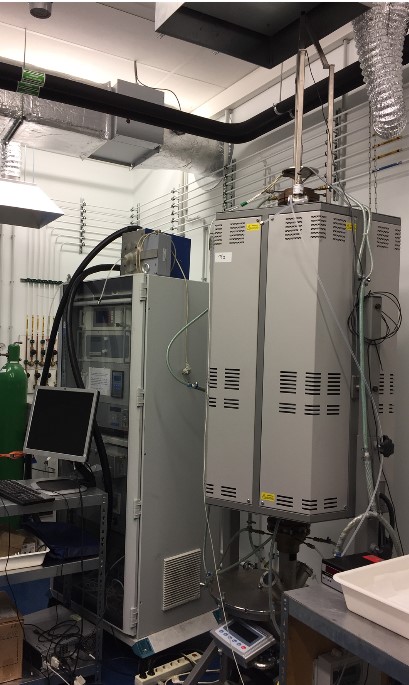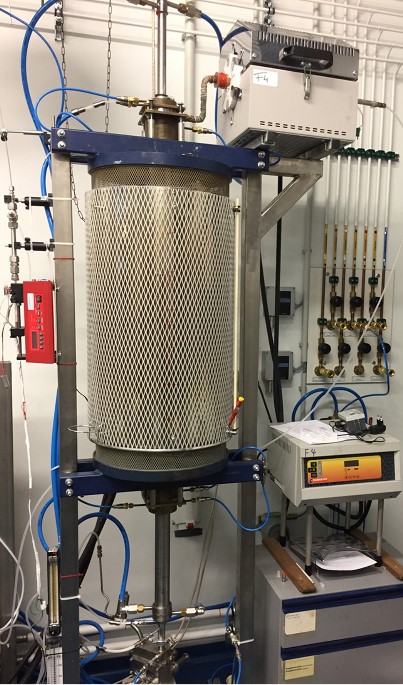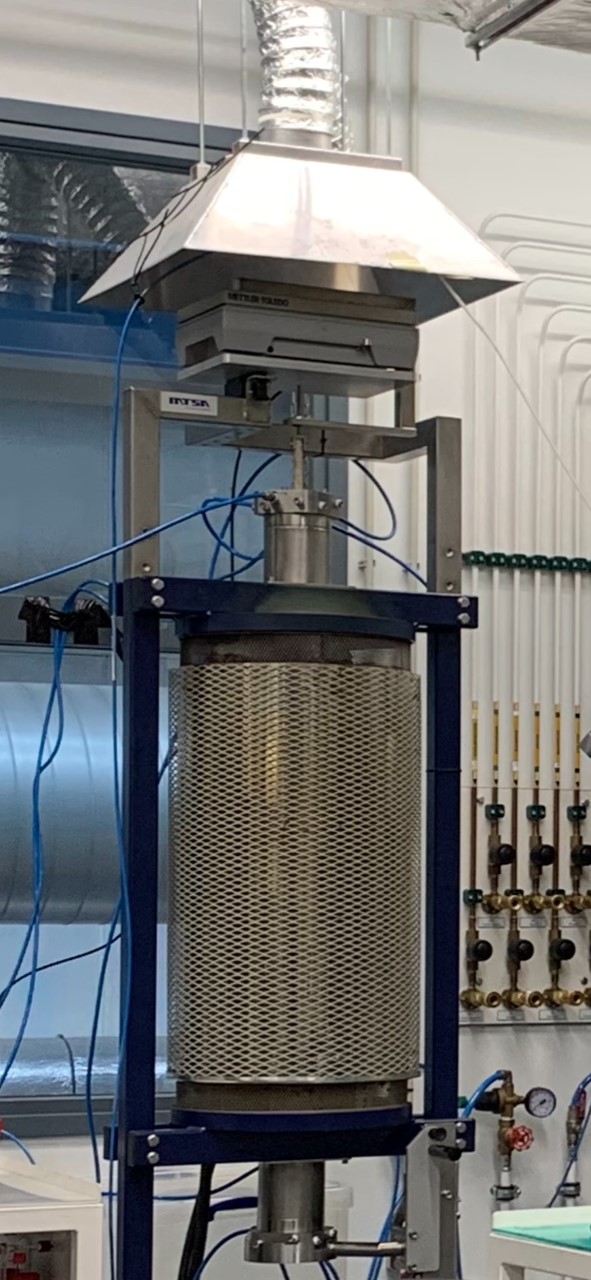Metals Production, Refining and Recycling
"Metals Production, Refining and Recycling" (MPRR) is a unique research group in process metallurgy and metallurgical recycling in the Netherlands. The group is responsible for all education and research within TU Delft related to metals extraction from primary and secondary resources. The group is active in scientific research covering both fundamental and application aspects in metals extraction and recycling through experimental studies and process modelling and simulation (thermodynamic/kinetic, CFD & DEM).
The MPRR group tries to “close the metals cycle”: starting from primary extraction and ending at the metals recycling. Our research focuses on the development of more efficient and sustainable technologies for metals extraction and recycling industry. The research of the group contributes to the sustainable production and supply of metals with minimum environmental impact. Greening the ironmaking and steelmaking with various de-carbonization innovations are, among others, our top priority now and in the near future.
We are active in scientific research covering both fundamental and applied aspects of materials recycling. We aim to support sustainable development and increase resource utilization by:
- Developing recycling routes for various materials, including battery electrodes, REEs from NdFeB magnets, eyewear frames, CFRPs
- Improving the recyclability of future products by looking into innovative approaches to make them more sustainable - design for recyclability
Research is conducted through a combination of metallurgical experiments (pyro- or hydrometallurgy, electrochemical) and process modelling (thermodynamic, kinetic, CFD, DEM).
Research
Our research is focused in the following fields, aiming for more efficient resource utilisation and cleaner production in metals extraction and recycling, and for eventually closing the metals cycle.
The research of the group is conducted mostly through a combination of metallurgical experiments and process modelling (thermodynamic, kinetic, CFD, DEM) for both process fundamentals and industrial applications.

List of ongoing projects
- CHIRON: Towards a carbon-lean HIsarna ironmaking process - Influence of H2 enrichment, mineralogy and microstructure on smelting reduction of iron-bearing raw materials. (PhD, Tata Steel – M2i)
- Max-SCORE: Maximizing SCrap in COnverter REfinging - Shifting the limits of scrap usage in steelmaking converters to minimize CO2 emissions (PhD, Tata Steel – M2i)
- Interactions of circulating elements in the ironmaking blast furnace (PhD, Tata Steel – M2i)
- ReclaMet: Reclaiming valuable metals from process residues with the HIsarna process (1 PhD & 2 postdocs, EIT RawMaterials upscaling project)
- VALOMAG: Upscale of permanent magnet dismantling and recycling (postdoc, EIT RawMaterials upscaling project)
- HydroMetEC: Hydrometallurgy in raw materials utilization (EIT RawMaterials Lifelong learning project)
List of recently completed projects
- Efficient and optimized sulphur removal in ironmaking and steelmaking (PhD, Tata Steel project)
- Shifting the limits for nut coke usage in ironmaking blast furnaces (2 PhDs, Tata Steel-M2i)
- Fundamental study of in-flight melting & reduction of iron ore particles in HIsarna new ironmaking cyclone reactor (PhD, postdoc, Tata Steel – M2i)
- EAERAN: European Rare Earth Magnet Recycling Network (2 PhDs, EU FP7 Marie Curie ITN project)
- REEcover: Recovery of Rare Earth Elements from magnetic waste in the WEEE recycling industry and tailings from the iron ore industry (2 PhDs, EU FP7 framework project).
- MSP-REFRAM: Multi-Stakeholder Platform for a Secure Supply of Refractory Metals in Europe (EU H2020 project)
- SCRREEN: Solution for Critical Raw Materials – a European Expert Network (EU H2020 project)
- RESTMETAL: Hydrometallurgical recovery of strategic metals from End-of-Life electronic wastes (1 postdoc, VGG – M2i project)
Highlighted publications
- Zhiyuan Chen, Christiaan Zeilstra, Jan van der Stel, Jilt Sietsma, and Yongxiang Yang. Reduction mechanism of fine hematite ore particles in suspension. Metallurgical and Materials Transactions B. 52 (2021), 2239–2252.
- Dharm Jeet Gavel, Allert Adema, Jan van der Stel, Cees Kwakernaak, Jilt Sietsma, Rob Boom, Yongxiang Yang. Melting behaviour of iron ore pellet bed under nut coke mixed charge conditions. ISIJ International 60 (2020) 3, 451–462.
- Frank Nicolaas Hermanus Schrama, Elisabeth Maria Beunder, Bart van den Berg, Yongxiang Yang & Rob Boom. Sulphur removal in ironmaking and oxygen steelmaking. Ironmaking & Steelmaking 44 (2017) 5, 333-343.
- Prakash Venkatesan, Tom Vander Hoogerstraete, Zhi Sun, Koen Binnemans, Jilt Sietsma, Yongxiang Yang, Selective extraction of REEs from ndfeb magnets by a room temperature electrolysis pretreatment step. ACS Sustainable Chemistry and Engineering 6 (2018) 7, 9375-9382.
- Y Yang, A Walton, R Sheridan, K Güth, R Gauß, O Gutfleisch, M Buchert. REE recovery from end-of-life NdFeB permanent magnet scrap: a critical review. Journal of Sustainable Metallurgy 3 (2017) 1, 122-149.
- Z Sun, H Cao, Y Xiao, J Sietsma, W Jin, H Agterhuis, Y Yang. Toward sustainability for recovery of critical metals from electronic waste: the hydrochemistry processes. ACS Sustainable Chemistry & Engineering 5 (2017) 1, 21-40.
- Yongxiang Yang, Kalevi Raipala and Lauri Holappa, Ironmaking. In: Treatise on Process Metallurgy, VOLUME 3: Industrial Processes. Editor in Chief: S Seetharaman. Elsevier, Amsterdam, 2014. 2-88.
- K Binnemans, PT Jones, B Blanpain, T Van Gerven, Y Yang, A Walton. Recycling of rare earths: a critical review. Journal of cleaner production 51(2013), 1-22.
- Y Yang, R Boom, B Irion, DJ van Heerden, P Kuiper, H de Wit. Recycling of composite materials. Chemical Engineering and Processing: Process Intensification 51 (2012), 53-68.
- Allert Tjipke Adema, Yongxiang Yang and Rob Boom. DEM - CFD simulation of the materials flow in an iron-making blast furnace. ISIJ International, 50 (2010) 7, 954–961.
Lab facilities
Research on extractive metallurgy and metals relying is multidisciplinary and thus, requires a variety of instruments and facilities. The MPPR group focuses on both the primary production of the metals and in recovering metals from various secondary resources and end-of-life waste. Our research focus can be broadly classified into the areas of hydrometallurgy and pyrometallurgy with two dedicated research labs. Our Hydrometallurgy lab has a range of facilities for leaching, solvent extraction, precipitation, electrowinning and electro-refining, and characterization of the finally produced metals. Our Pyrometallurgyl lab is equipped with arrange of furnaces that are specifically designed for ironmaking and steelmaking and molten salt electrolysis, and a thermal balance and a glove-box. The students also have access to XRD, XRF, ICP-OES, Ion Chromotograph, SEM/EDX, EPMA, and various optical microscopes.
Hydrometallurgy Lab
The Hydrometallurgical Lab is equipped with a wide range of instruments and set-ups to cover different unit operations such as – leaching, solvent extraction, precipitation, and electrolysis (Figure 1). Starting with equipment required for mechanical activation like high energy ball mills, the lab contains a thermoshaker unit with accurate temperature control and multiple mixer - settler units that can be used for multi stage solvent extraction (Figure 2). Our group currently deals with variety of extraction processes such as recovering copper from WEEE in collaboration, recovery of REEs from mine tailings, recovery of REEs from WEEE, and decoating of NdFeB permanent magnet waste.
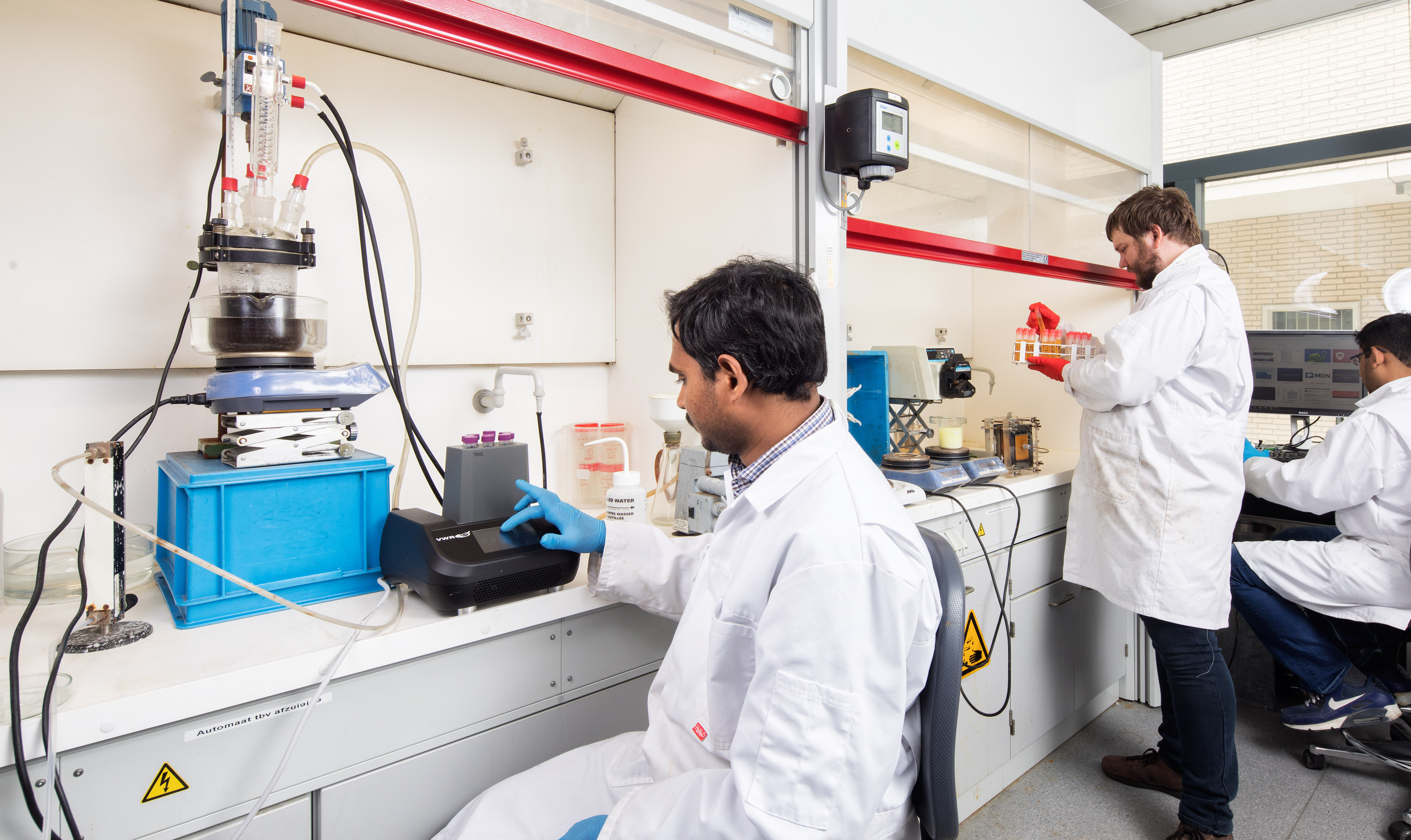
Figure 1: The Hydrometallurgy lab
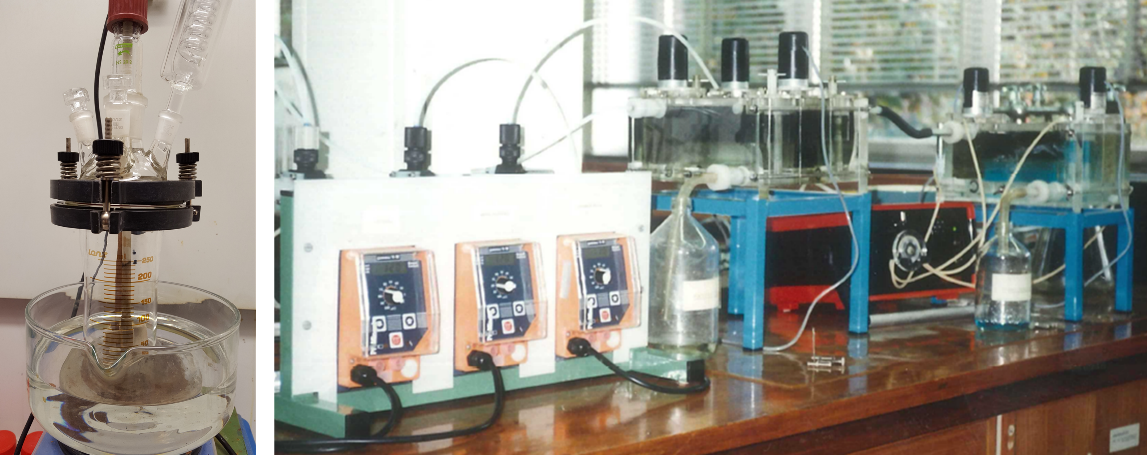
Figure 2: Leaching set-up (left) and a mixer-settler unit for solvent extraction (right)
Pyrometallurgy Lab
The Pyrometallurgy Laboratory deals with high-end research on primary production processes such as ironmaking as well as molten salt electrolysis. MPRR Pyrometallurgy Lab is recently completely re-built (Figure 3).
Our Reduction Softening and Melting (RSM) apparatus (Figure 4, left) is developed in house in collaboration with Tata Steel. It has the ability to simulate the real conditions (load, gas mixture and thermal profile) inside a blast furnace. It is used extensively for the projects dedicated to the process improvement and innovation in the domain of ferrous metallurgy. For effective ‘nut coke’ (size, 10-35 mm) utilisation in the blast furnaces, RSM campaign is in progress.
To study the in-flight behavior of individual solid particles in a high temperature atmosphere, high temperature drop-tube furnace (HTDF) was built to generate the solid – gas mixtures (Figure 4, middle). It provides laminar flow conditions of gas – particle suspensions to avoid the particle – particle interactions. With controlled feeding of the solid particles, the high temperature behavior of the particles such as heating, reduction, gasification and melting can be investigated.
A recently developed macro-scale TGA furnace could be used for kinetic studies of larger sized samples, capable of monitoring the reaction processes at high temperatures up to 1600°C (Figure 4, right). The weight change together with off-gas analysis can be continuously measured and recorded onto computer system. To study the high temperature multi-phase reactions, high precision mass spectrometer (Hiden) can be connected to the off-gas system to continuously monitor the gas composition changes.
Furthermore, our Pyrometallurgy lab is also equipped with a molten salt electrolyzer for study the production and refining of metals through high temperature electrolysis through molten melts.

Figure 3: The Pyrometallurgy lab
